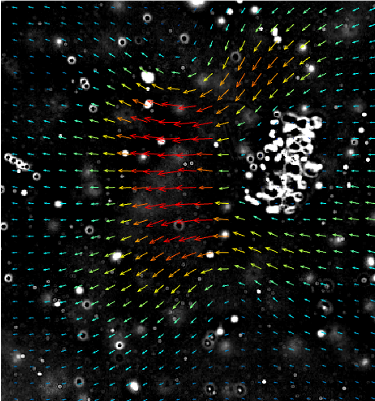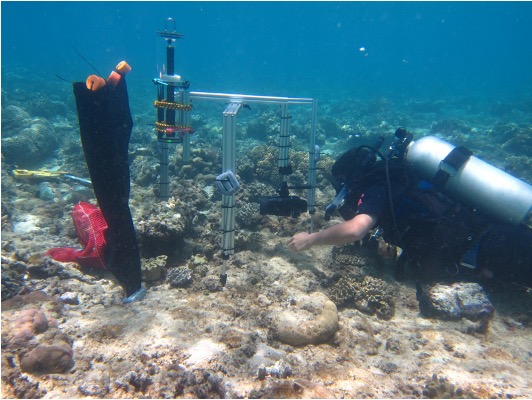
Tom Hata
tomhata@berkeley.edu
Ecological biofluiddynamics
I am interested in studying how water motion shapes marine communities. My current research focuses on the water flow produced by swimming choanoflagellate colonies of different designs. The goal is to identify how colony shape and size, and the arrangement of flagellated cells in the colonies, affect their swimming and feeding performance as well as the hydrodynamic signals their predators can detect. Choanoflagellates are important components of aquatic food webs and are used as model systems to study selective factors that might have been involved in the evolution of multicellularity in the ancestors of animals.
I also conduct field research and I specialize in designing and manufacturing novel instruments to measure or recreate flow conditions of challenging marine environments such as wave-swept shores and coral reefs. During my PhD, I designed and manufactured a field-deployable flow sensor capable of measuring water velocities in the rocky intertidal zone at scales relevant to settling spores and larvae. I found that high water velocities (>2 m/s) can occur often (more than once per minute) even at heights just 0.25 mm above the substrate. Additionally, I built a wave chamber capable of replicating the extreme flows found in the intertidal zone and recorded adult barnacles feeding in these flows. I observed that barnacles are able to feed in high water velocities (>1 m/s), and that their feeding rates may potentially be independent of wave velocity. Finally, I measured flow patterns on the Great Barrier Reef at scales relevant to settling coral larvae, and then exposed coral larvae to a replication of these flow patterns in a lab setting. I found that because coral larvae are weak swimmers compared to their ambient flow environment, they are unable to affect their trajectories in even benign flows.
Additionally, I am interested in translating academic research into scalable, useful products. As a postdoc, I worked on transitioning Foldscope, an origami-based folded paper microscope, from lab to startup. Additionally, I have worked in R&D in biotechnology and healthcare AI.

Education
- Ph.D. in Biology (2015): Stanford University (Stanford, CA) B.A. in Integrative Biology (2008): University of California, Berkeley (Berkeley, CA)
Publications
- Koehl, M. A. R., E. Perotti, D. Sischo, T. Hata, M.G. Hadfield (2022) Effects of currents, waves, and biofilms on motion and surface contacts of tubeworm larvae swimming above or below surfaces. Marine Ecology Progress Series 686: 107–126, doi.org/10.3354/meps14001.
- Hata T., J. S. Madin, V. R .Cumbo, M. W. Denny, J. Figueiredo, S. Harii, C. J. Thomas and A. H. Baird (2017) Coral larvae are poor swimmers and require fine-scale reef structure to settle. Scientific Reports 7(1): 1-9, doi.org/10.1038/s41598-017-02402-y.
- Chin, N.E., T.C. Wu, J.M. O'Toole, K. Xu, T. Hata, and M. A. R. Koehl (2023) Formation of multicellular colonies by choanoflagellates increases susceptibility to capture by amoeboid predators. Journal of Eukaryotic Microbiology. 70, e12961. doi.org/10.1111/jeu.12961
- Dissertation
